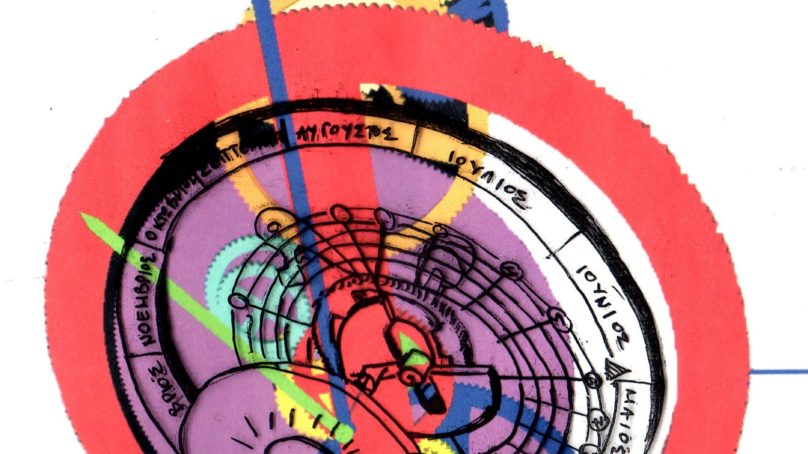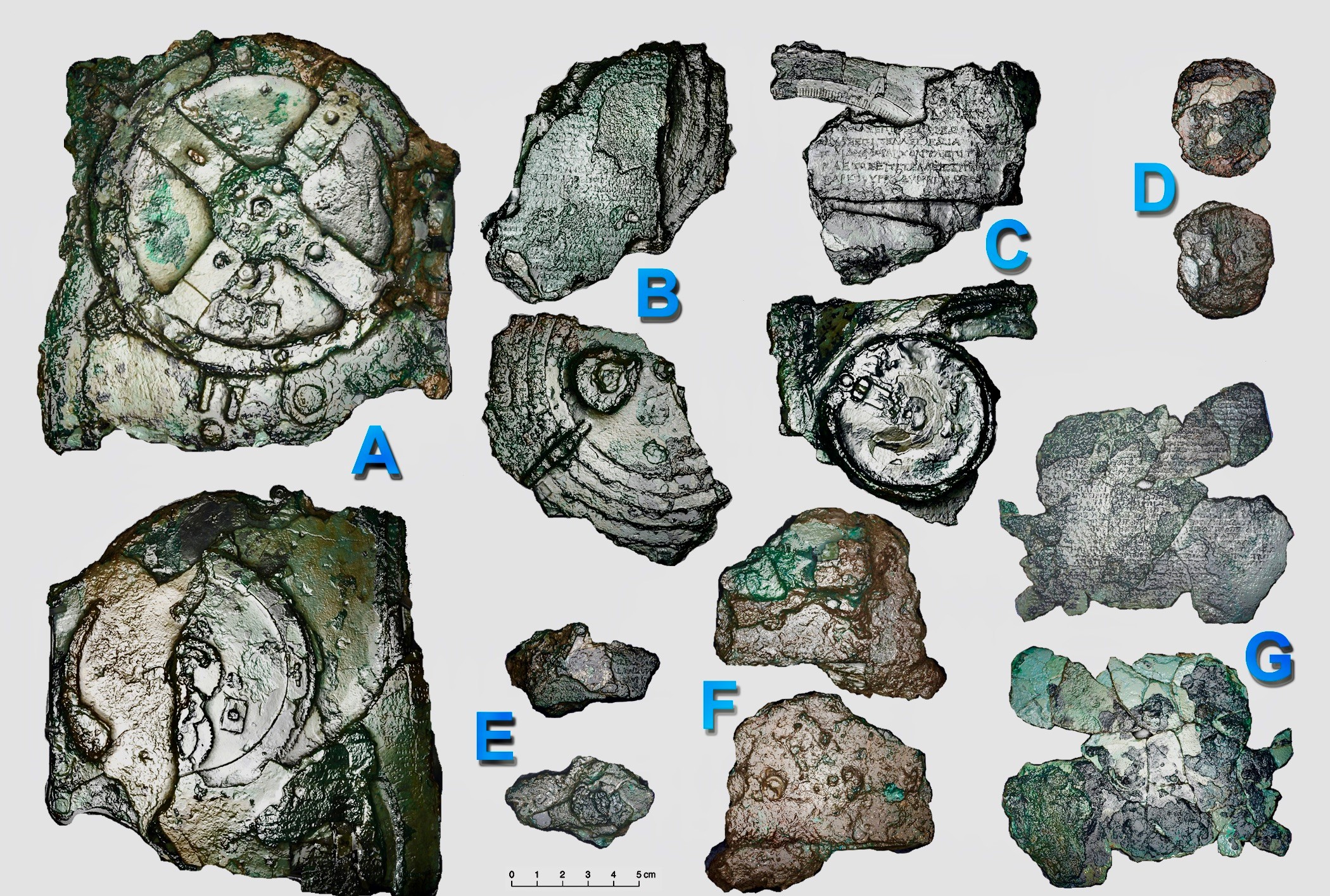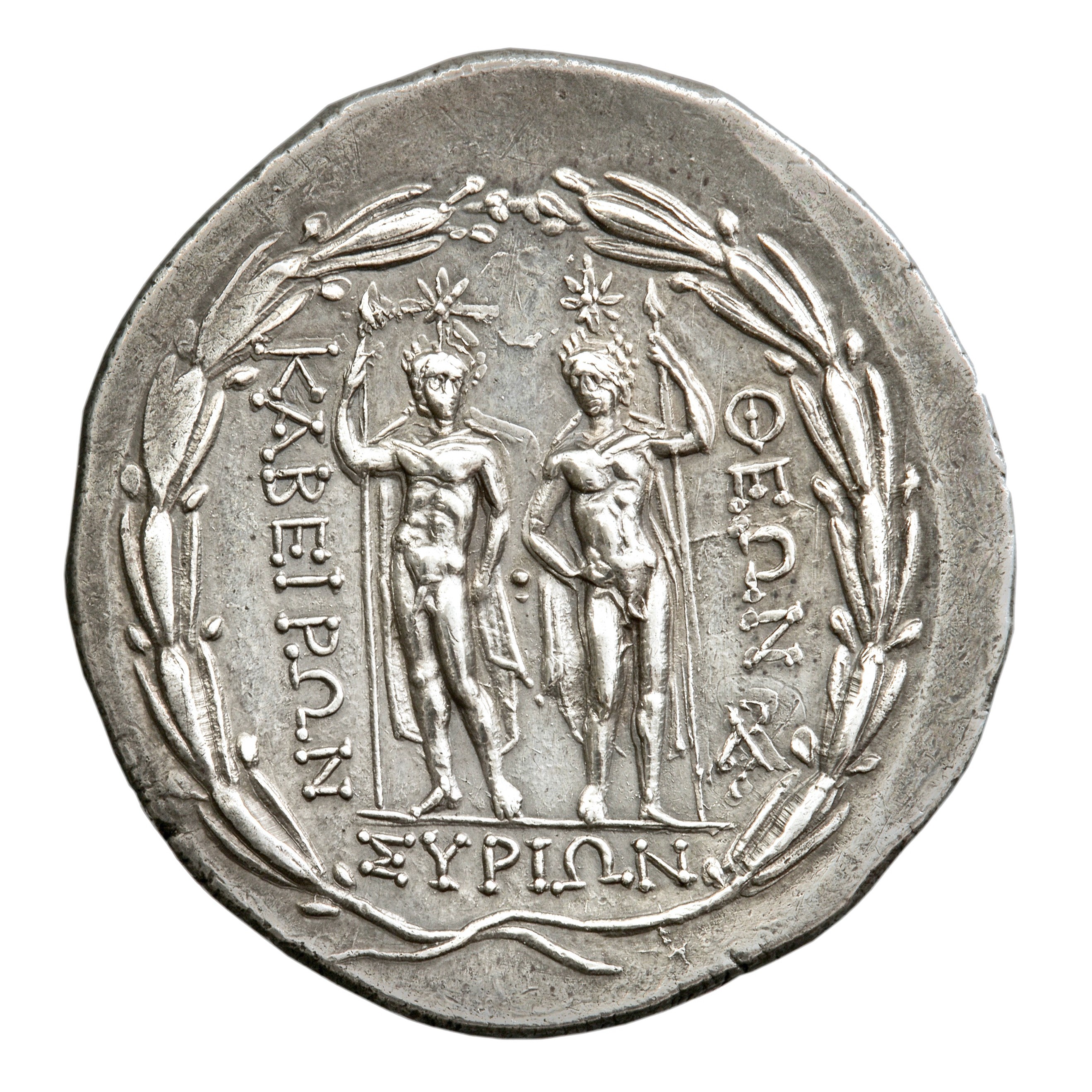
Writing my book on the Greek computer, The Antikythera Mechanism (2021), opened the doors to the fascinating and gorgeous world of Greek science, art, and civilization.
The Antikyhera Mechanism is, perhaps, its foremost example. The “computer” is dated from the second century BCE. It’s a mind-boggling specimen of scientific technology: nothing like it had come into being before the eighteenth century. It makes one wonder where the Greeks—and the rest of humanity, for that matter—might have taken the world had they been left alone to pursue their dreams. Might the work of the ancient Greeks, if they had remained free, averted the Dark Ages? Clearly, the genius expressed in the Antikythera computer would have had tremendous spillover effects, triggering a scientific revolution propelling the Greeks to the Moon and beyond.
Alexander the Great, king of the ancient Greek kingdom of Macedon, was possessed of the Aristotelian ideas that laid the groundwork for the creation of the Antikythera computer. Alexandria in Egypt reflected this vision, what with a university-Mouseion and a grand Library hosting the best minds of the time and half a million books.
However, Alexander underestimated the rival Romans and died too young (at just 32 years of age, in 323 BCE). Following his death, dissention and infighting among his generals provided the Romans with an opportunity to conquer Hellas (Greece). In 146 BCE, the Romans wiped out Corinth. This was probably the time the Antikythera Mechanism came into being on the island of Rhodes. But with the Romans in Greece, an irreversible decline had set in. In time, even the greatest Hellenic achievement, the Antikythera astronomical computer, nearly vanished.
What we now have of this fabulous machine is fragments—82 of them. I needed images of those fragments so that I could better understand what that device did and why.

Front and back views of the largest fragments of the Antikythera computer. Fragment A, showing the Cosmos, includes 23 of the 30 of the computer’s gears. Courtesy Tom Malzbender and Hewlett Packard.
My friend Xenophon Moussas, professor emeritus of space physics at the University of Athens, sent me those images. He was one of a team of international scientists who, in 2005, in the basement of the National Archaeological Museum in Athens, “decoded” the secrets of the world’s first computer.
My investigation and writing started in 2007 and continued for about ten years. After all this time, I am still astonished by the inventiveness and extraordinary intelligence and craftsmanship that gave birth to this tiny moving sky reflecting the Cosmos and predicting its phenomena—all weaved into the Olympics and other Panhellenic athletic and cultural celebrations. For the ancient Greeks, designing and building the Antikythera astronomical computer was a true moonshot.
Mythic origins
I started my journey with the gods of science and technology: Metis, her daughter Athena, Hephaistos, and his twin sons—the Kabeiroi gods. Metis embodied the qualities of cunning and inventiveness and intelligence, all in one. Athena continued the work of her mother, teaching women weaving and spinning, and advancing craftsmanship. Hephaistos, the great metallurgist, represented fire and knowledge. He advanced technology, constructing robots of enormous power and intelligence. Reading Homer on how the pilotless boat from Phaiakia (Kerkyra) took Odysseus to Ithaca, we can credit Hephaistos with the invention of artificial intelligence!

The twin Kabeiroi gods featured on a coin from the Aegean island of Syros: ΚΑΒΕΙΡΩΝ ΣΥΡΙΩΝ ΘΕΩΝ (Kabeiroi gods from Syros). Courtesy Numismatic Collection, Alpha Bank, Athens.
His sons, the Kabeiroi gods, were so important in promoting metallurgy and craftsmanship that the Greeks called them “Great Gods” and celebrated them in the Aegean islands of Lemnos, Delos, Syros, Samothrake, Chios, Paros, the coastal regions of Thrace and Macedonia, and Thebes in Boeotia.
The Kabeiroi gods were models of intelligence and craftsmanship. This was no small asset. Homer and other poets and mythographers described the accomplishments of these deities and men who learned from them, artists like Daidalos and inventors like Palamedes. These gods and men became living paragons in using existing knowledge and advancing it to make life easier and better.
These models also helped the Greeks in their ceaseless efforts to find the truth in nature and the heavens. Metis, Athena, Hephaistos, the Kabeiroi gods, Daidalos, and Palamedes left a powerful legacy of logic, intelligence, tools, and craftsmanship in creating ideals of art and techne.
Wondering
I continued with the ancient Greek philosophers: Thales, Anaximander, Pythagoras, Herakleitos, Parmenides, Plato and Aristotle; scientists and mathematicians including Demokritos of Abdera who invented the Atomic Theory, Euclid, who summarized Greek mathematical knowledge, and Archimedes, a scientific and engineering genius who set the foundations of science; engineers like Ktesibios who invented mechanical gears and Hero, who preserved the technological legacy of the Greeks; and astronomers like Aristarchos of Samos, who invented the Heliocentric Theory of the Cosmos, Hipparchos who created mathematical astronomy as we know it, and Ptolemaios whose Almagest (the Greatest), a summary of mathematical, astronomical, and cosmological knowledge, educated the Arabs and the West for centuries.
At each step of this intellectual adventure, I found images that fixed the text into increasingly solid foundations, with each image bringing me back to the origins of Greek thought and technology.
Craftsmanship was more than mere technical stuff: it was an expression of the good, the true, and the beautiful, all mixed up with science and scientific technology. It was art.
Aristotle
Aristotle in the fourth century BCE put these mythical and historical and scientific ideas in order. He invented what we call science, and much more. Moreover, he put together a means by which that science could advance for the benefit of all. While teaching in Athens, he set up the infrastructure that eventually created the Antikythera Mechanism. It helped, of course, that his pupil, Alexander the Great, conquered Persia and spread Hellenic culture all over the world.
Charles Darwin was particularly moved, if not inspired, by Aristotle, whose chief scientific achievement was his invention of zoology-biology. Darwin read in translation one of Aristotle’s zoological works, Parts of Animals. He was stunned. He thanked William Ogle, the editor and translator of the biological works of Aristotle. “I have rarely read anything which interested me more,” Darwin wrote. “From quotations which I had seen I had a high notion of Aristotle’s merits, but I had not the most remote notion what a wonderful man he was. [Carl] Linnaeus and [Georges] Cuvier have been my two gods, though in very different ways, but they were mere schoolboys to old Aristotle.” (Darwin to Ogle, February 22, 1882 in Francis Darwin, ed., The Life and Letters of Charles Darwin, 2 Vols. (New York: Basic Books, 1959) II, 427.)
Linnaeus, 1707-1778, was a Swedish botanist and Cuvier, 1769-1832, was the French father of modern comparative anatomy and paleontology. While they may have been Darwin’s “gods,” Linnaeus and Cuvier—two of the greatest scientists of Europe—had also studied Aristotle.
Georges Cuvier had no doubt that Aristotle was a benefactor of humankind and one of the true immortals. He wrote, “…the pupil of Plato discovered and demonstrated more truths and did more scientific work in one life of 62 years than 20 centuries after him.” Moreover, Cuvier considered
Aristotle was one of the greatest observers who ever lived. “His genius for classifying was the most extraordinary ever produced by nature. … The great divisions and subdivisions of the animal kingdom by Aristotle are astonishingly precise. They have almost all resisted additions by science.” (Georges Cuvier, Histoire des sciences naturelles, 5 vols (Paris: Fortin, Masson, 1841) I, 130-149, 432.)
An immaculate compendium of art and technology
The intelligence and method of Aristotle became the moving spirit and science of the university and library of Alexandria, two institutions funded by the Greek kings of Egypt. There they cultivated the greatest minds of the third and second and first centuries BCE. The Antikythera computer emerged from that Aristotelian tradition. Archimedes and Hipparchos added the sinews of flawless engineering and an understanding of astronomy that enabled the creation of the computer.
The Antikythera Mechanism was both art and technology. It was an immaculate compendium of astonishing complexity and accuracy. It predicted the movements and positions in the sky of large stars, constellations, the planets, the Sun god Helios, and the Moon; the eclipses of the Sun and the Moon, and the phases of the Moon, weaving a tapestry of heavens and Greek society. It arose from heliocentric cosmology, mathematical astronomy, science, technology, and beauty, informing the Greek stargazers and investigators of the workings of the Cosmos.
Modern Greek and non-Greek scientists have an opportunity to learn from the Antikythera Mechanism. They can emulate its astronomic and social paradigm of bridging the gap between the Cosmos and society, enlightening the public with the secrets of the heavens. Such insights from this most ancient computer may bring about a new computer (and other machines and institutions) for the primary benefit of society.
To the Greeks of the early twenty-first century, the Antikythera Mechanism remains a living testament to the genius of their ancestors and an inspiration for what they can still become.
 Evaggelos Vallianatos is a historian and environmental strategist. He studied zoology and Medieval Greek history at the University of Illinois. He earned a doctorate in history at the University of Wisconsin and did postdoctoral studies in the history of science at Harvard. He worked on Capitol Hill and the US Environmental Protection Agency. He is the author of hundreds of articles and seven books. He taught at several universities, including his current teaching at the Lyle Center for Regenerative Studies, California State Polytechnic University, Pomona. His most recent book is The Antikythera Mechanism. The book’s cover features a painting of the Antikythera Mechanism by the Greek artist Evi Sarantea. The largest fragment mirrors the Cosmos; in the upper right is seen a 19-year Metonic calendar spiral; below it appears the 18-year eclipse-predictive Saros spiral.
Evaggelos Vallianatos is a historian and environmental strategist. He studied zoology and Medieval Greek history at the University of Illinois. He earned a doctorate in history at the University of Wisconsin and did postdoctoral studies in the history of science at Harvard. He worked on Capitol Hill and the US Environmental Protection Agency. He is the author of hundreds of articles and seven books. He taught at several universities, including his current teaching at the Lyle Center for Regenerative Studies, California State Polytechnic University, Pomona. His most recent book is The Antikythera Mechanism. The book’s cover features a painting of the Antikythera Mechanism by the Greek artist Evi Sarantea. The largest fragment mirrors the Cosmos; in the upper right is seen a 19-year Metonic calendar spiral; below it appears the 18-year eclipse-predictive Saros spiral.
About the featured image: Painting of the Antikythera computer by the Athenian mathematician Dionysios Kriaris, who also reconstructs ancient machines, including the Antikythera computer. Courtesy of Dionysios Kriaris.



